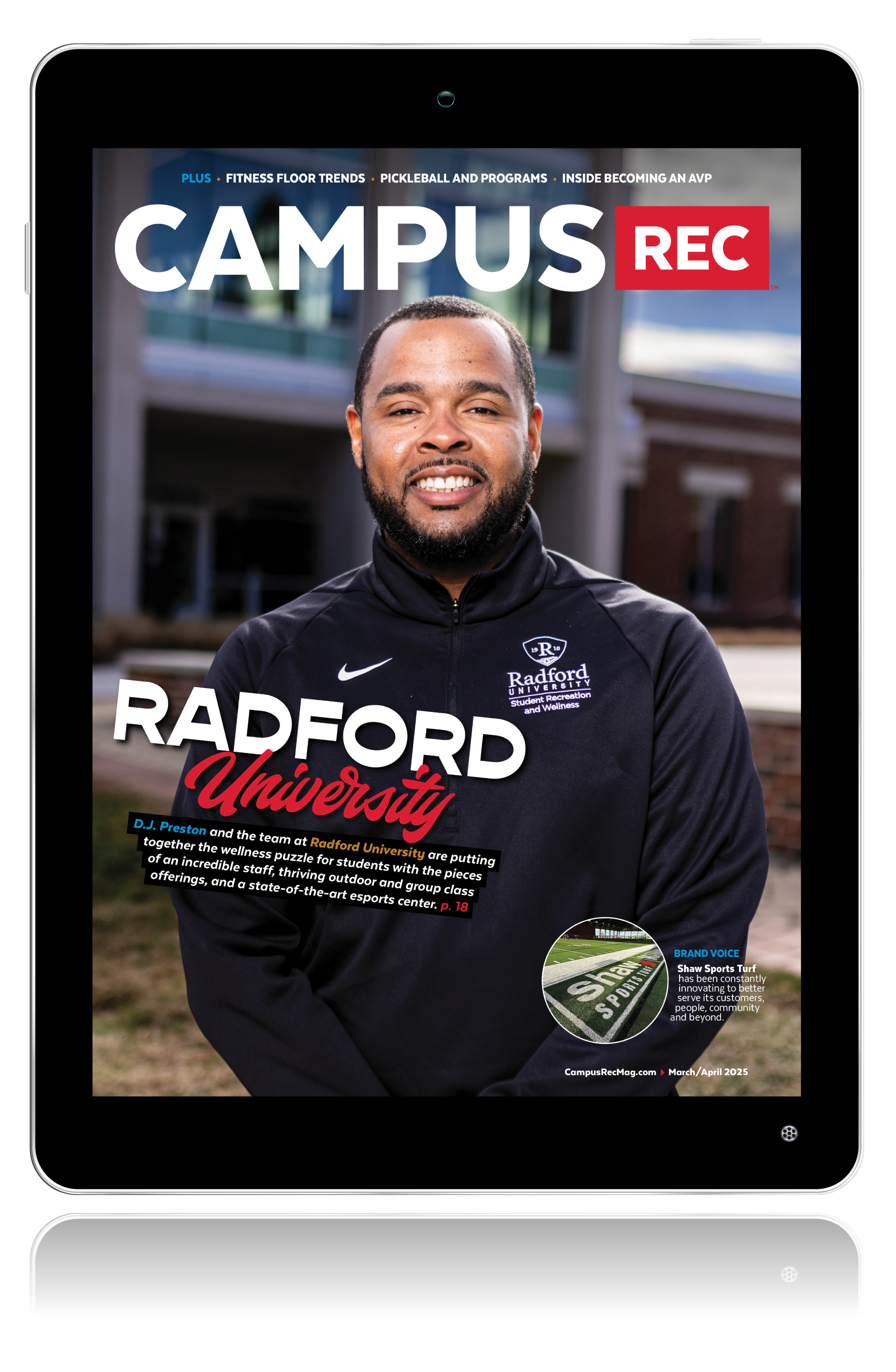
How often you have stated to yourself or publicly after a meeting, “Wow! That was an awesome meeting!“
For many of you the answer is likely closer to zero than you or your team would like. Most of us simply do not take into account when a meeting could or should be avoided, or we fail to examine the effectiveness of our scheduled meetings. The end-result is unfocused meetings that run over time causing more meetings.
Unfortunately, meetings are an unavoidable part of communication for all teams, and campus recreation staff meetings are no different. There is nothing worse than a bad team meeting. It is soul sucking. I am guilty of running the standard, “Let’s kick it around the room and share what we are doing this week” meeting. In that setting, the participants are just waiting for their turn to speak, thinking of what they will say. Once they have shared, people generally check-out.
Think of the potential cost of this type of meeting. Count the number of people sitting around the table and apply their hourly rate of pay divided by the length of time allotted for a meeting. In most instances, it is a rather expensive use of valuable time. Are your meetings a worthy investment? As a team leader, it is essential to make them purposeful and not a wasted opportunity.
Ask yourself: Can this task or decision be accomplished without a meeting? What information would be better suited for a one-on-one meeting, a face-to-face conversation or simply an email? If the answer to any of these questions is yes, do not schedule the meeting. Find an alternate path. Information sharing is vital for team success, but is it possible to share information in a more engaging way?
How do you plan and set up meetings? Do you articulate the purpose of the meeting? Is it development, planning, discussing issues, solving problems or simply to share information? When you know the purpose, it helps you not plan too much for one meeting. Make the expectations of your meetings very clear for example, explaining you expect people to show up on time, not use phones or laptops, avoid multitasking, or whatever rules are appropriate for your group. If you allow cellphones or tablets at the meeting, you are allowing potential distraction. Technology can be a great thing if you channel it properly.
About three years ago, I read the Patrick Lencioni book, “Death by Meeting,” and it changed my perspective on running team meetings. I completely changed the format of my team meetings in order to make them relevant, more effective and something less dreadful. And it took five steps.
Step 1
Make an agenda and send it out at least 24 hours in advance to allow people to process it, add to it, poke holes in it/point out errors, or ask questions. This allows people to be better prepared to be an active participant in discussion topics, and it allows the meeting to stay focused. For our team, if the agenda does not apply to them, they have the ability to opt out of the meeting altogether. On my side of the agenda, I establish windows of time for each topic to keep the meeting flowing. The goal is to keep the meeting under an hour. If we have to table a topic for further discussion later, that is acceptable.
Step 2
Start the meeting on time, and do not allow tardiness. Starting a meeting late was the most cited source of meeting problems in a recent survey of over 1,000 office workers. This does not just mean that people are in the room chatting with each other at 9 a.m. for a 9 a.m. meeting. It means the agenda effectively begins at 9 a.m. For the intramural sport folks out there, game time is forfeit time. If you permit tardiness, you as a leader are promoting it, and it takes away time from the meeting topics.
Step 3
Begin with the hook. Give the team a compelling reason to pay attention and not zone out or to start checking their email. Research shows it is hard to hold people’s full attention for longer than 20 minutes in any situation. That is the reason TED Talks cap at 18 minutes. For my team, we start each of our bi-weekly meetings with a developmental topic that applies to all of us. I may lead it, or someone from the team does. We learn and grow together in an interactive discussion format. The topic changes with each meeting, and it relates to the items we will discuss during the meeting.
Step 4
Focus on issues that matter to the whole group and not just a subset, and make sure everyone is heard. Those focused discussions can be reserved for one-on-one or smaller group meetings as opposed to full team meetings. When you give people a reason to disengage, they will. Mine for conflict on discussion items in order to break up groupthink. As the facilitator, you may need to play devil’s advocate on issues in order to have all sides of an issue represented. A facilitator may need to call on people to voice their opinion. Some people may want to speak up but do not feel like they can unless they’re asked. The people who hold back sometimes have the best perspective on the conversation and definitely need to be heard. At the same time, if someone is being exceptionally talkative, it’s your responsibility as the facilitator to not let them dominate the meeting.
Step 5
End on time. By ending on time, you are showing you value your people and their schedule. If they can consistently count on you to run meetings that end when you say they will, it can free up time on their schedule to execute other things. Effective team meetings should not drag on more than one hour. Sixty minutes is generally the longest time workers can remain truly engaged. If you have to table discussion on an issue or convene a small group to discuss an item after the meeting, that saves everyone else from having to sit through it. At the end of the meeting, identify action items, deliverables (who is doing what by when) and follow-up in writing.










